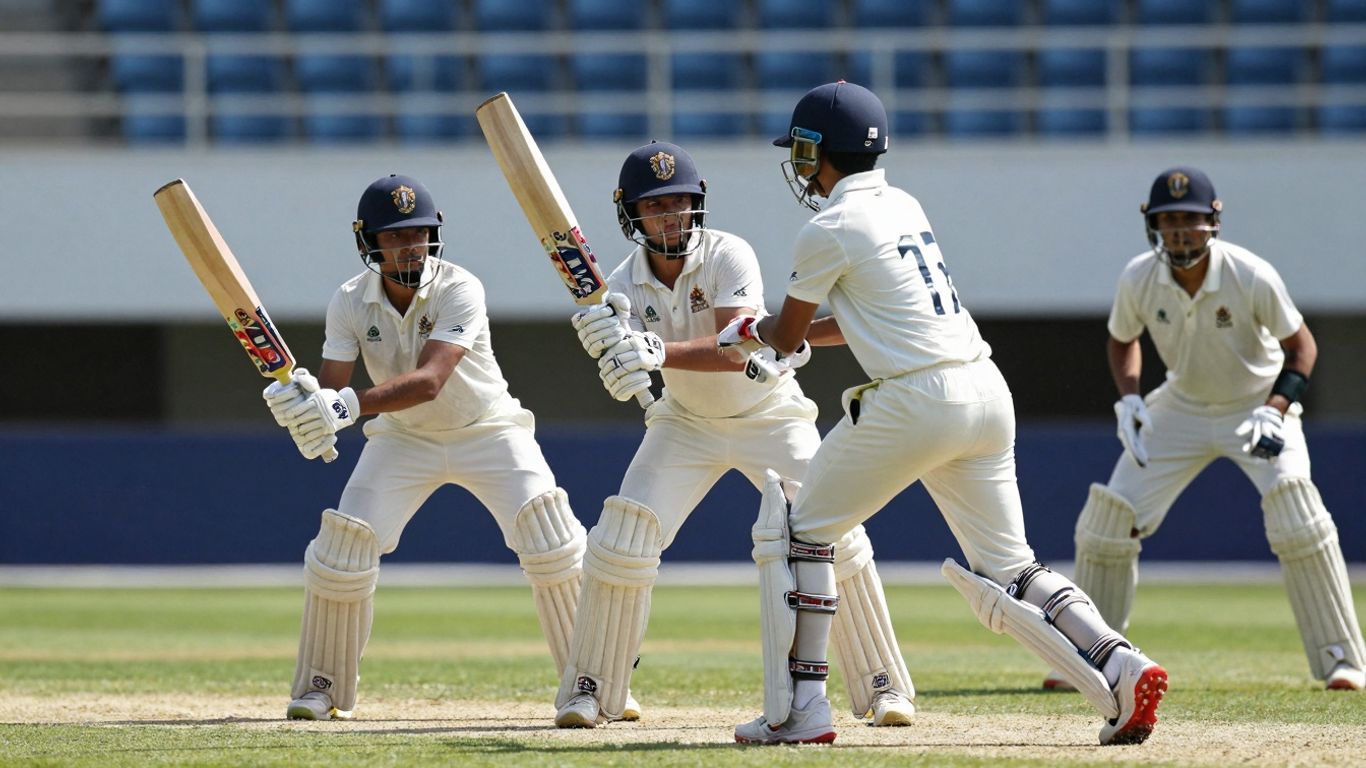Alright, Aussie soccer players, let’s talk about a move that looks spectacular but can be a bit tricky to nail: the bicycle soccer kick. It’s the kind of goal that gets the crowd on their feet, the kind you dream about scoring. But getting it right takes more than just fancy footwork; it’s about technique, practice, and a bit of game smarts. We’ll break down how to make this acrobatic effort work for you, from getting your body in the right spot to choosing the right ball and knowing when to attempt it.
Key Takeaways, Mate!
- Get your body position right, lining up your shot with your feet and making sure you follow through to guide the ball.
- The type of soccer ball you use matters; a good quality ball feels better and responds more predictably for your bicycle soccer kick.
- Keep an eye on the wind and how far away the ball is; these environmental factors will change how you need to kick.
- Practice makes perfect – get out on the pitch with your mates and get a feel for how the ball moves.
- Knowing when to try a bicycle soccer kick is as important as knowing how to do it; read the game and stay calm to turn chances into goals.
Mastering the Bicycle Soccer Kick Technique

Alright, let’s get down to business with the bicycle kick. It looks flashy, and yeah, it is, but there’s a fair bit of technique involved to actually pull it off without looking like a dag. It’s not just about flinging yourself backwards and hoping for the best, you know.
Perfecting Your Foot Placement
When you’re going for the bicycle, where you connect with the ball is pretty important. Most blokes aim for their laces, which is fair enough for power. But sometimes, using the instep, that bit on the side of your foot, can give you a bit more control over the direction. It’s all about experimenting to see what feels right for you. Getting the sweet spot on your boot is key to making it fly true.
Achieving Optimal Body Position
This is where it gets a bit tricky. You need to get your body up and over the ball. Think about throwing your legs up and over your head, almost like you’re trying to do a backwards somersault, but with more control. Your non-kicking leg needs to be planted firmly before you launch, giving you a solid base. The timing of your jump and the tuck of your knees really makes a difference to how high you get and how much power you can generate. It’s a bit like learning to jump higher for soccer.
The Importance of Follow-Through
Don’t just kick the ball and then let your leg drop. You’ve gotta follow through with your kicking leg, guiding the ball towards your target. This follow-through helps with both power and accuracy. Imagine you’re trying to push the ball in the direction you want it to go, even after you’ve made contact. It’s that extra bit of commitment that can turn a hopeful punt into a goal.
It might feel a bit awkward at first, and you’ll probably end up on your backside a few times. That’s just part of the process, mate. Keep at it, and you’ll start to feel the rhythm of it.
Understanding Ball Dynamics for the Bicycle Kick

Right then, let’s talk about the ball itself. It’s not just a lump of leather or synthetic stuff, you know. The type of ball you’re using can actually make a fair bit of difference to how your bicycle kick comes off. Think of it like trying to hit a golf ball with a rusty old nine-iron versus a proper driver – you’re gonna get different results.
Choosing the Right Soccer Ball
First up, you need to pick the right sort of ball. For adults, a Size 5 is the go-to, but if you’re playing with the younger blokes, you’ll want a smaller one. Also, consider where you’ll be playing. If it’s on a rougher surface like concrete or even a patchy park, you’ll want a ball that’s built tough. A durable ball is essential for rough surfaces. You don’t want to be spending your hard-earned on something that’ll fall apart after a few sessions. It’s worth chucking a few extra bucks at a decent ball that’ll last, especially if you’re keen on nailing those fancy kicks.
How Ball Quality Affects Your Kick
So, why does the quality matter? Well, a good ball usually has better aerodynamics. This means it’ll fly more predictably through the air, making it easier to judge your approach and strike. The texture and grip on a quality ball also help you keep it closer when you’re controlling it, and it can make your shots more accurate. It’s like having a bit of extra control over the flight path, which is exactly what you need for a tricky move like the bicycle kick. A poorly made ball might wobble or swerve unexpectedly, ruining your attempt before you even get it off the ground. It’s all about that consistent feel and predictable flight, which you get with a decent soccer ball.
Ball Durability on Different Surfaces
Now, let’s get real about where you’re playing. If you’re just kicking around on a pristine pitch, most balls will hold up okay. But if you’re on a bit of a rougher patch, maybe a park with some stones or even a bit of asphalt, you need something that can take a beating. A ball that’s designed for durability will have tougher outer panels and better stitching. This means it won’t get scuffed up too quickly or start losing its shape. Trying to pull off a bicycle kick with a ball that’s already seen better days is just asking for trouble. You want a ball that’s going to react the way you expect, no matter the surface.
You don’t need to spend a fortune to get a decent ball, but it’s worth investing in something that will last. Consider the bicycle kick and how the ball will respond to it.
Reading the Game for the Perfect Bicycle Kick
Reading the game is a massive part of pulling off a decent bicycle kick, or any fancy bit of footy, really. It’s not just about having a crack when the ball’s in the air; you’ve gotta suss out the situation first. Think about where everyone is on the park – your mates, the opposition defenders, and where the actual goal is. Spotting that little pocket of space or a moment of confusion in the defence is your cue to get ready. You don’t want to be attempting a bicycle kick when there are three blokes marking you tightly, or when you’re miles offside. It’s about making smart decisions, not just flashy ones.
Assessing Teammate and Defender Positions
Before you even think about getting airborne, take a quick look around. Where are your teammates? Are they making runs that could draw defenders away? Or are they in a position to receive a pass if your kick doesn’t quite come off? Equally important is knowing where the opposition defenders are. If they’re all bunched up, a bicycle kick might just be a waste of energy and possession. But if a defender is caught flat-footed or out of position, that’s your opening. It’s about understanding the defensive shape and finding the gaps.
Identifying Space for a Bicycle Kick Opportunity
This is where you start to see the potential for a bicycle kick. It usually happens when the ball is coming into the box, maybe from a cross or a lofted pass, and you’ve managed to get yourself between the ball and the goal, with a bit of space around you. Defenders might be scrambling, or perhaps they’ve lost track of you. That moment of isolation, where you have a clear sight of the ball and a bit of room to manoeuvre, is prime time for a bicycle kick. You’re looking for that split second where the defence isn’t organised, giving you a chance to execute without immediate pressure.
Staying Composed Under Pressure
Okay, so you’ve spotted the chance, you’re in position, and the ball’s coming your way. Now, the hard part: staying calm. It’s easy to panic when everyone’s watching, especially if the game’s on the line. But a rushed bicycle kick is usually a wild one. Take a breath, focus on the ball, and trust your training. Remember, even the best players miss sometimes, but going for it with confidence is half the battle. Don’t let the pressure get to you; treat it like any other kick, just with a bit more flair. It’s about having the nerve to try when it matters most, knowing that a successful attempt could be a real game-changer. You need to be able to make these decisions under pressure, just like when you’re trying to avoid being caught offside [1582].
Environmental Factors Affecting Your Bicycle Kick
Alright, so you’ve got the technique down pat, but what about the stuff you can’t control? The elements, mate. They can turn a potential screamer into a bit of a fizzer if you’re not paying attention. We’re talking about judging how far away the ball is, how the wind’s blowing, and even how high you need to get it. It’s not just about kicking it; it’s about kicking it smartly.
Judging Distance Accurately
This is a big one. You need to get a feel for how far away the ball is when it’s coming to you. Too close, and you might not have enough room to get your body into the right position. Too far, and you’ll need a heap more power, which can mess with your technique. It’s all about practice, really. Try to get a sense of the distance before you even start your run-up. A good way to get a feel for this is by practising with mates, just tossing the ball up to each other at different ranges. You’ll start to develop an instinct for it.
Accounting for Wind Conditions
Wind is a sneaky opponent. A strong gust from the side can send a perfectly aimed shot way off course. If it’s blowing against you, you’ll need to put more power into it. If it’s at your back, you might need to be a bit more delicate. You’ve got to be aware of the wind’s direction and strength before you even think about striking the ball. It’s like trying to throw a frisbee on a windy day – you have to adjust your aim. You can’t control the wind, but you can definitely adjust your kick to work with it. Understanding how wind affects free kicks can give you a good idea of what to expect.
Adjusting Elevation for Longer Kicks
When the ball’s a bit further out, you often need to kick it higher to get it to the target. This means you’ll be hitting the ball a bit lower on your foot, or angling your body differently. The trick is to get enough height without ‘ballooning’ the ball, which means it just goes up in the air and doesn’t travel forward much. It’s a balancing act. You want it to have a nice arc, carrying the distance but still dipping towards the goal. Think about the trajectory you want – a gentle curve or a more direct path – and adjust your leg swing and contact point accordingly.
Practice Makes Perfect for Bicycle Soccer Kicks
Righto, so you’ve been practising your technique, sussing out the ball, and now it’s time to really put in the hard yards. You can’t just rock up to a game and expect to pull off a screamer without putting in the work. Consistent practice is the absolute key to nailing that bicycle kick. It’s not just about kicking a ball around; it’s about drilling the specific movements and getting a feel for how the ball reacts when you connect with it in that unique way.
Consistent Practice with Mates
Grabbing your mates for a regular kickabout is a ripper way to get reps in. Don’t just play a game; set yourselves little challenges. One mate can chip the ball up, and you try to get the bicycle kick away. Mix it up – sometimes you’re the chipper, sometimes you’re the kicker. This sort of focused practice, even in a casual setting, builds muscle memory and confidence. Plus, it’s more fun when you’ve got a bit of friendly competition going. You might even find yourself trying to recreate some of the spectacular goals you see on TV, which is exactly what you want.
Developing a Feel for Ball Reaction
This is where you really start to understand the nuances. How does the ball feel when you hit it with the laces versus the instep? Does it spin differently? Does it fly straighter? You need to get a sense of the sweet spot on your foot and how to adjust your body just before impact. Try kicking the ball at different heights and speeds to see how your body needs to compensate. It’s about developing an instinct for the ball’s flight and how to meet it perfectly. This feel is what separates a hopeful attempt from a genuine threat. You can learn a lot about how the ball flies by just experimenting.
Dedicated Time on the Pitch
While casual kickabouts are great, you also need to dedicate specific time just for practising the bicycle kick. This means going out there with a plan. Maybe you spend 15 minutes just working on the jump and body rotation, without even kicking a ball. Then, have someone toss balls up to you, or practise kicking them up to yourself, focusing solely on the connection. It’s about repetition and refinement. Don’t be afraid to look a bit silly at first; everyone does when they’re learning something this tricky. The more time you put in on the pitch, the more natural it will become.
You’ve got to be willing to put in the hours. It’s not going to happen overnight, and there will be plenty of failed attempts. But each time you try, you’re learning something new about your body’s movement and how to connect with the ball. Persistence is the name of the game here.
The Art of the Bicycle Kick Goal
So, you’ve practiced the technique, you’ve got the ball, and you’ve even figured out the wind. Now, it’s about putting it all together when it really counts – scoring that game-changing goal. It’s not just about having a crack; it’s about timing, composure, and knowing when to unleash that spectacular move. Seizing the moment is everything when you’re aiming for a bicycle kick goal.
Seizing the Moment for a Bicycle Kick
Spotting the chance for a bicycle kick isn’t always obvious. You need to read the play, see where the defenders are, and crucially, where the keeper is positioned. Is the ball coming in at the right height and pace? Is there enough space for you to get the kick off without being immediately closed down? It’s a split-second decision, and often, hesitation means the chance is gone. Don’t be afraid to try it if the situation feels right; sometimes, the unexpected is what catches everyone out. Remember, even if it doesn’t come off, the attempt itself can put defenders on notice.
Turning Chances into Match-Winning Goals
When you do get that perfect ball in the air, it’s about executing with confidence. Think about your body position, the contact point on the ball, and that all-important follow-through. A well-executed bicycle kick can be a thing of beauty, leaving the keeper with no chance. It’s about turning a difficult situation into a moment of brilliance. The goal isn’t just to score, but to score in a way that lifts your team and demoralises the opposition. It’s the kind of goal that gets the crowd on their feet and can completely change the momentum of a match. You want to be the player who makes that difference, the one who delivers when it matters most. It’s about making sure your effort counts for something significant, like winning the local footy club match.
The Thrill of Scoring a Bicycle Kick
There’s really nothing quite like it. The feeling of connecting perfectly, seeing the ball fly, and watching it nestle in the back of the net – it’s pure exhilaration. It’s a moment of individual skill that can bring the whole team together. The sheer audacity of the attempt, followed by the perfect execution, is what makes it so special. It’s a highlight reel goal, the kind you’ll be talking about for years to come. It’s the ultimate reward for all the practice and dedication you put into mastering the technique. It’s the kind of goal that makes all the hard work worthwhile.
Keep Kicking Goals, Mates!
So, there you have it. We’ve gone through the whole shebang, from getting the right ball under your feet to actually pulling off that sweet bicycle kick. Remember, it’s not just about having a crack; it’s about putting in the time. Head down to the park, get a few mates together, and just have a go. Don’t be afraid to try things out, even if you look a bit silly at first – that’s how you learn. Keep practising, stay positive, and you’ll be nailing those spectacular goals before you know it. Now get out there and show ’em what you’ve got!
Frequently Asked Questions
How do I get my body in the right position for a bicycle kick?
To nail a bicycle kick, you need to get your body positioned just right. Think about jumping up, arching your back, and getting your kicking leg up and over. It’s a bit like doing a backward somersault but with a ball involved! Practise getting the feel for the movement, and don’t be afraid to look a bit silly at first.
Where on my foot should I hit the ball for a bicycle kick?
The sweet spot for kicking the ball is usually with your laces, the top part of your foot. This gives you the most power and accuracy. Make sure you connect with the ball cleanly, not too high or too low on your foot, or it won’t fly the way you want.
How can I get better at bicycle kicks?
You’ve gotta practise, mate! Get your mates together and have a few kickabouts. Try doing bicycle kicks over and over. The more you do it, the better you’ll get at feeling how the ball reacts and how much power to put into it.
Does the wind affect my bicycle kick?
Yeah, the wind can be a real pain! If it’s windy, you’ll need to adjust where you’re aiming. A strong headwind might mean you need to kick a bit harder or lower, while a tailwind could send it flying further than you expect. Always check the wind before you have a go.
What kind of soccer ball is best for practising bicycle kicks?
Choosing a good quality ball makes a big difference. A decent ball will fly truer and be easier to control. If you’re playing on rough surfaces, make sure you’ve got a tough ball that won’t get ruined too quickly. It’s worth investing in one that feels good to kick.
How do I score a bicycle kick goal?
Scoring a bicycle kick goal is the ultimate thrill! It’s all about reading the game, seeing the chance, and staying calm. Don’t hesitate when the opportunity pops up. Trust your training, take a deep breath, and go for it. Even if you miss, you’ve given it a crack!





